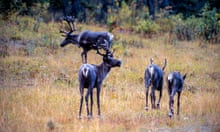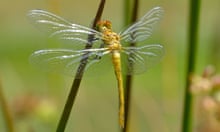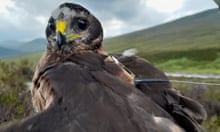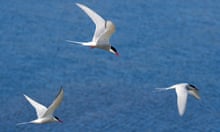The number of corncrakes serenading Scotland with their strange summer calls has increased for the first time in five years, giving hope that this secretive bird can be saved from extinction in Britain.
Calling males rose to 870 this summer, up from a low of 828 in 2022 and the highest total since the summer of 2019.
Conservationists hope it is a turning point for the red-listed bird, whose long-term decline was briefly halted earlier this century – its numbers rose on the islands of north-west Scotland to 1,289 calling males in 2014 before declining again precipitously.
Cutting pastures for silage and the loss of scrubby cover has decimated populations of the migratory bird, which once kept country people awake at night with the male’s repetitive, mechanical-sounding calls, which bequeathed the bird its scientific name, Crex crex.
In a last-ditch effort to save the bird, RSPB Scotland’s Corncrake Calling partnership project has been increasing the quality and quantity of corncrake habitat, creating vegetation corridors of irises, nettles and cow parsley in which the birds can hide from predators.
Working with farmers and crofters, the project has encouraged later hay-cutting and mowing dates to ensure the ground-nesting bird’s chicks are not destroyed.
Anne McCall, director of RSPB Scotland, said the 870 calling males brought hope of a turning point. “These results are a significant moment for efforts to save corncrakes in Scotland and a real tribute to the enormous collective effort of farmers, crofters and local communities to help these birds through Corncrake Calling,” she said. “It shows that targeting the quality and quantity of corncrake-friendly habitat and land management yields results.”
The islands of Coll, Lewis and Tiree – where much of this National Lottery Heritage Fund-supported conservation work has been taking place – have all reported significant increases in the number of males heard this year. Coll’s calling males have increased from 47 in 2022 to 68 in 2023, Lewis from 74 to 88 and Tiree from 273 to 293.










